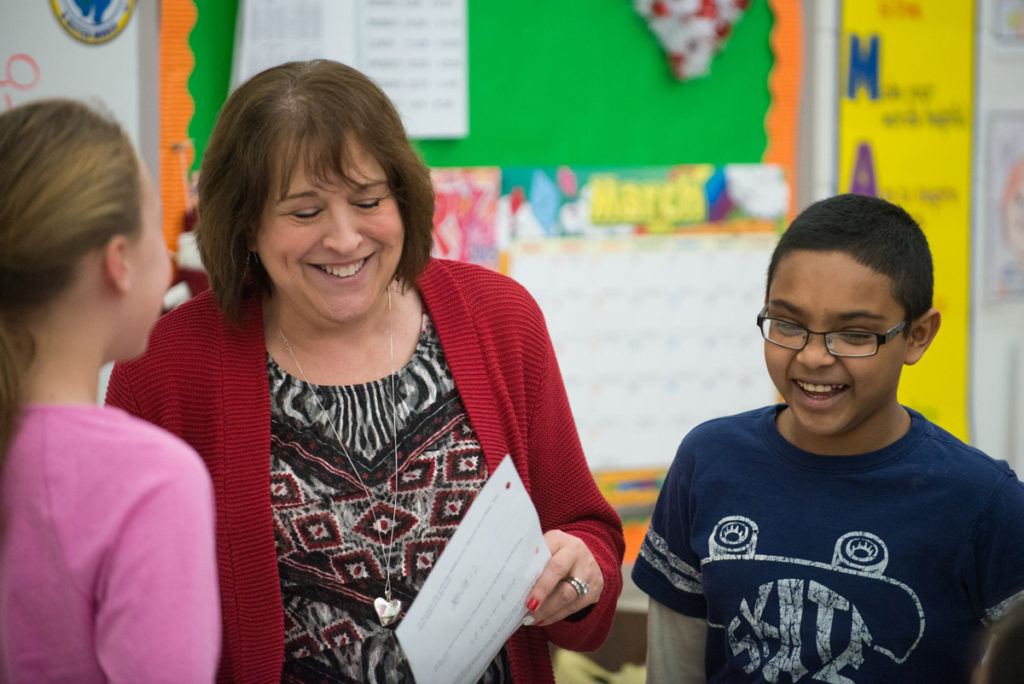
What’s going well in your classroom these days? At this time of year, especially, it’s common for teachers to focus more energy on challenges such as reteaching procedures that aren’t going smoothly, having problem-solving conversations with students, parents and colleagues, and stopping misbehavior quickly and respectfully before it escalates. Doing those things is important, but so is remembering to appreciate and acknowledge signs of success.
Noticing and naming what’s going well can have a powerful, positive effect on how you and the students you teach feel—about being in school, about learning, and even about each other. I learned this firsthand a few years ago, when I returned from a maternity leave in January and found that the group of second graders I’d started the year with had changed during my twelve weeks away, and I had too.
In the four weeks we’d had together at the beginning of the year, we’d discussed our hopes and dreams, set up classroom rules, and gotten classroom procedures in place. Now that seemed like years ago. The rules we’d created didn’t seem alive in our class anymore. Transitions from one activity to the next were a challenge, and respectful listening was, too. I found myself constantly noticing and reacting: “Tori, that wasn’t friendly, try again,” “Juan, stop and sit down.” I felt exhausted from putting so much energy into redirecting.
In February, I confided in a colleague about how I felt, and she suggested that I try to notice more of what was going well in my room—and she told me about some good things that she’d observed. It was wonderful to hear her thoughts, since at that point I was really feeling discouraged.
So, with my colleague’s observations in mind, I made a list of things that were going well on my end: good plans, energizing Morning Meetings, and some of the procedures I’d modeled early were still in place and working well. That felt uplifting. Next, I made a goal for myself: to begin noticing things that students were doing well and to use reinforcing language to comment on them. Since looking for positives wasn’t automatic for me at that point, I put a sticker on my clock to remind myself until it became a habit. Every time I looked at the clock to check the time, I’d see the sticker and be reminded to look for a positive.
For instance, after noticing a smooth transition into line for recess, I would say to the group, “You all lined up quickly and are ready to go.” Or, to conclude a group discussion following math, “Did you notice all the great math strategies we used today?!” When a student offered to read with a classmate whose partner was absent, I’d find a moment to remark privately “Troy, you’re really showing what our rule, ‘Be kind’ looks like.”
It felt odd at first to comment on things that seemed very ordinary, even though they were genuine signs of progress and success. Over time, though, it began to feel more natural, and as I began to feel more comfortable, I also noticed the students engaging in more positive behaviors themselves. That made it even easier to comment on the growth I was seeing.
Making this adjustment to my mindset and language was a small thing, but it lifted something that had been covering the joy in our class. I felt happier and more hopeful. The students were lighter and more positive with one another, and we began to laugh and have more fun together. It was a few months later than usual, but we became a community.
“Children build on their strengths, not their weaknesses . . . it’s as important for us to see and name what children are doing well as to identify how they can improve.”
— Paula Denton, EdD, The Power of Our Words
Tens of thousands of educators have used The Power of Our Words: Teacher Language That Helps Children Learn as their guide to getting the most from positive teacher language. Read it to learn how you can use words, tone, and pacing to build a classroom where students feel safe, respected, appreciated, and excited about learning.
by Michelle Gill